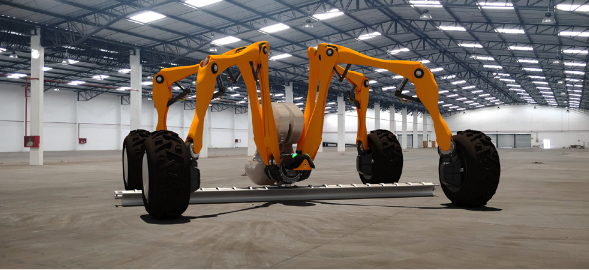
Canonicals' open source operating system (OS) for edge and Internet of Things devices, Ubuntu Core 22 , is now generally available as the company eyes market opportunities for the fully containerised OS at the heart of a growing ecosystem of embedded industrial, telecommunications, automotive and robotics devices.
The release is a long-term support (LTS) one meaning customers will get 10 years security maintenance of kernel, OS and application-level code. (Those looking for a use case for Ubuntu Core could do worse than to look at a deployment by a major shrimp farming enterprise Oceanos, which deploys Ubuntu Core on Dell Edge Gateways, in turn connected to sensors that monitor shrimp pools for P.H. levels, temperature and salinity.)
Those looking for Ubuntu-certified IoT/edge devices have options with Dell (6), Lenovo (2), Raspberry Pi (12), Advantech (15), Intel (6), DFI (4), Xilinx, (4), AAEON (3) and many others: “Our goal at Canonical is to provide secure, reliable open source everywhere - from the development environment to the cloud, down to the edge and to devices,” said Mark Shuttleworth, CEO of Canonical in a release: “With this release, and Ubuntu’s real-time kernel, we are ready to expand the benefits of Ubuntu Core across the entire embedded world.”
Ubuntu Core 22 is underpinned by Ubuntu 22.04 LTS, first released in May this year with a host of security improvements (Canonical boasted that the OS meets cloud confidential computing, real-time kernel for industrial applications, and enterprise Active Directory, PCI-DSS, HIPAA, FIPS and FedRAMP compliance; on the cloud side being the only Linux release able to Azure Confidential VMs, while at the opposite end of the computational food chain, also now being able to run on hardware as modest as the lowly 2GB Raspberry Pi.)

> Follow The Stack on LinkedIn <
Telcos are a big target of Canonical and the Ubuntu 22.04 release earlier this year came with telco-centric praise from Intel.
The chip firm noted at the time that “Ubuntu 22.04 LTS’s real-time kernel unlocks low-latency use cases for real-time applications like Cloud RAN... Together with Canonical, we have validated Intel’s FlexRAN SDK to enable OpenRAN implementations requiring pre-emptive real-time kernel capabilities to meet 5G latency requirements.”
Ubuntu Core 22's lightweight edge OS maintains the same partition layout as Ubuntu Core 20, providing a path to upgrade earlier systems to Ubuntu Core 22 and backward compatibility of the new features. It is also now possible to deploy Ubuntu Core 22 to bare-metal devices in the field using MAAS -- or Metal as a Service, which lets users provision physical machines like virtual machine (instances) in the cloud; Ubuntu Core 22 lets users provision a full system image remotely for bare-metal hardware. A modernised factory reset feature meanwhile makes what used to be a heavily manual task simpler via a straightforward factory reset boot mode, accessible from run and recovery modes, for those who want to restore to a known pristine state.
Other Ubuntu core users include British agri-tech startup The Small Robot Company, which is running Ubuntu Core on its fleet of Raspberry Pi-powered robots. As founder Joe Allnutt puts it in one case study: "Having the same operating system across our various environments – desktops, cloud, and robots – is also very helpful. I wrote a big install script to get the robots up and running, and I found that I could use 90% the same script for desktops as well. That’s pretty incredible considering that one’s a credit card sized £30 computer, and one’s a £1,600 laptop.”
